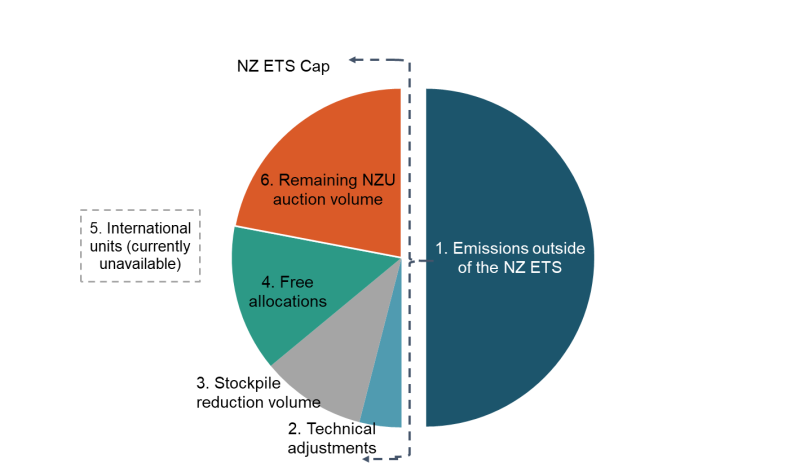Setting unit limits in the NZ ETS
The Government is required to set an overall limit, on NZUs supplied to the market for each of the next five years. This is also known as the five year rolling period.
The overall limit and price control settings are guided by an emissions budget.
